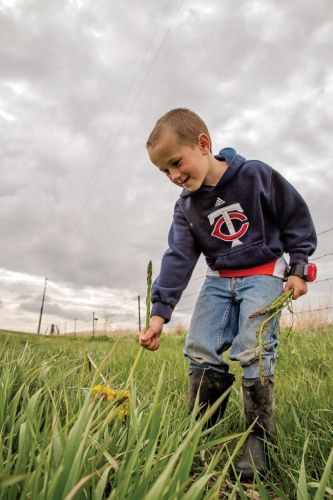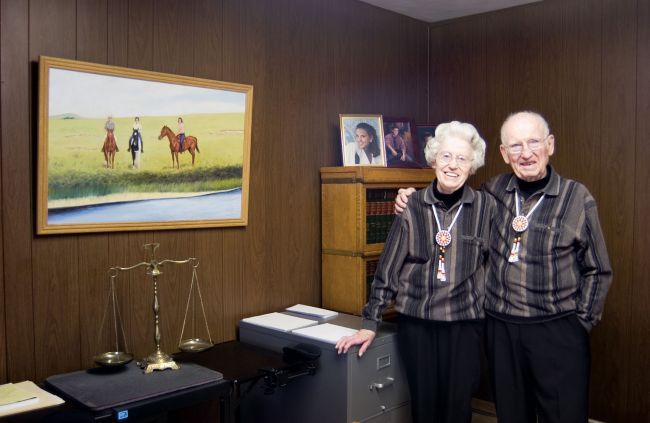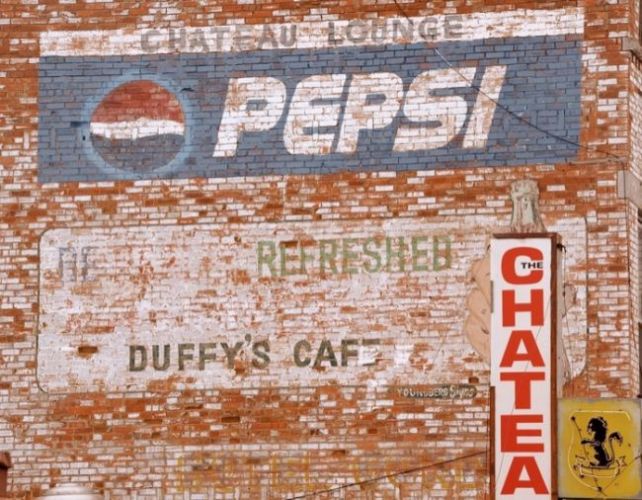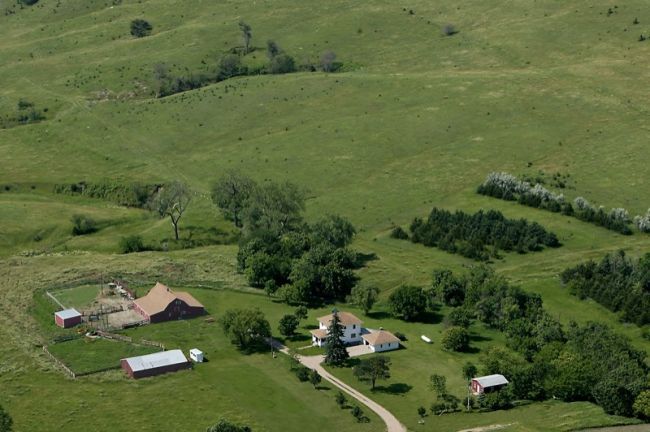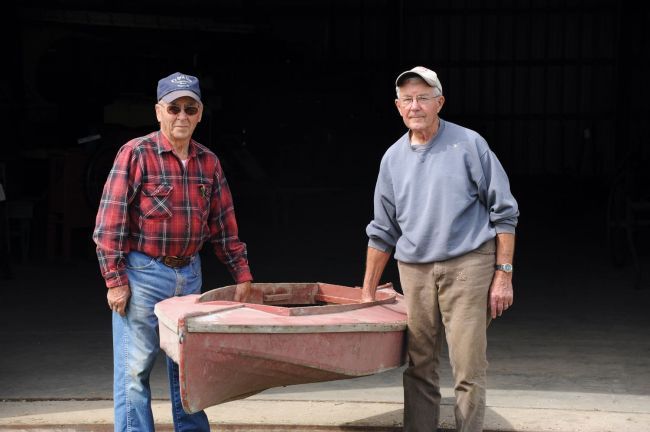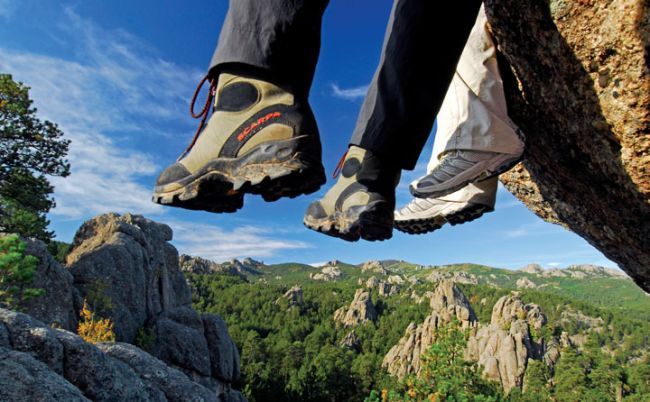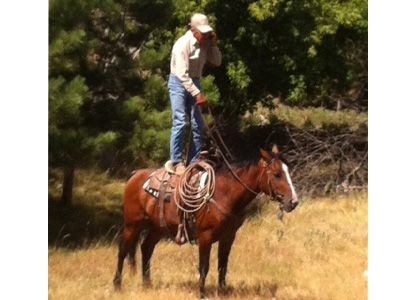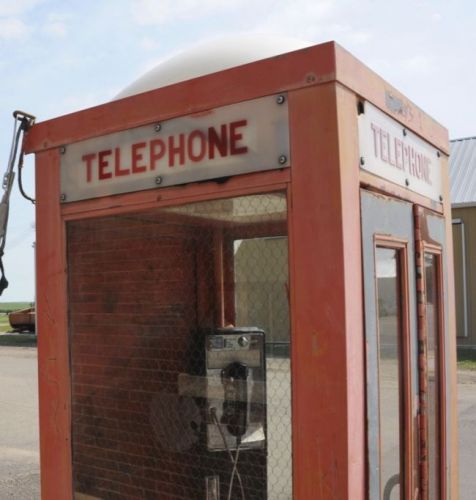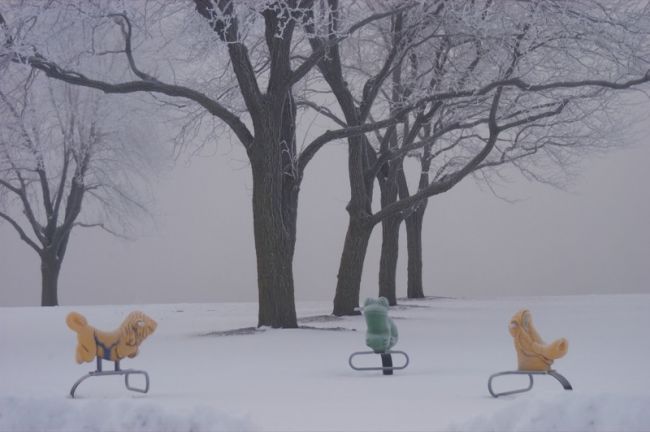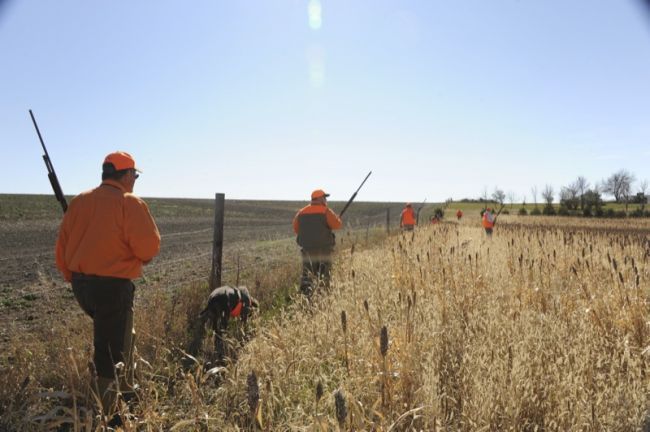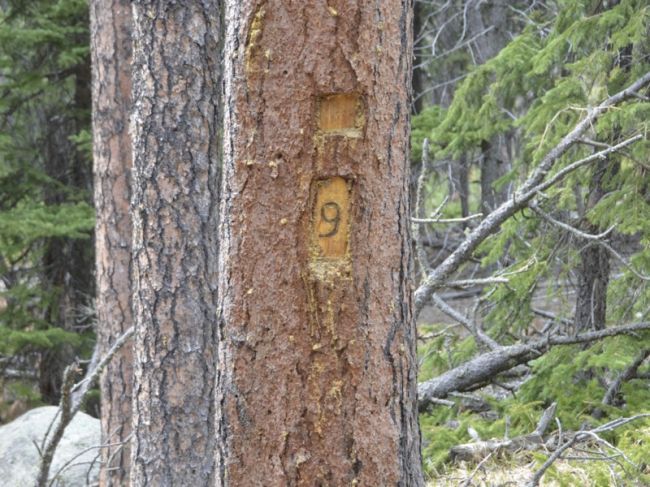
Editor's Notebook
Join our Editor-at-large and founder, Bernie Hunhoff, as he offers stories, quips & travel tips gathered as he roams South Dakota. Other magazine staffers may contribute here or there as well. Enjoy the South Dakota miscellanea.
Singing Across South Dakota
May 15, 2013
South Dakota's newest country music talent performs in Yankton next Thursday (May 23). Rehme Sutton, who grew up on a ranch near Burke, has just debuted her first album and she included a stop in Yankton as part of a home-state tour.
The free show begins at 9 p.m. at Yankton's newest music venue, Rounding Third (aka Robbie's Little Casino) on Third Street. Everyone is invited to attend.
The Sutton name is synonymous with rodeo, ranching and politics in South Dakota. All those traditions are part of Rehme's music.
Her grandfather Billie Sutton was a state legislator who ran for lieutenant governor, and her brother Billie was a college rodeo star before he was badly injured by a bronc several years ago. Fortunately, he survived and is now a state senator. He's the subject of "Billie's Song," the finale of his sister's album, "Long Road Home."
Rehme has a passion for singing and guitar-playing that comes through loud and clear in her stage performances. Mix that with a deep love of her home state, and the result is a musical freshness that is gaining attention across the country.
Her itinerary includes the following stops.
STURGIS — May 21 at the Knuckle
FORT PIERRE — May 22 at the Casey Tibbs Rodeo Center
YANKTON — May 23 at Rounding Third, 9 p.m.
BURKE — May 25 at Stella's
America's Asparagus Gap
May 6, 2013
"Where to find spring asparagus" reads the headline on the New York Magazine website. Hmmm, I'm thinking, we have a similar story in our May/June issue. Perhaps we're not so different from our fellow journalists in the Big Apple.
So I read the New York Magazine story and learn that the writer is simply suggesting how to find asparagus at six restaurants that I've never heard of, including Rosemary's, Rouge Tomate and Northern Spy Food Co., the latter of which is featuring a $27 plate of weakfish with a spring stew of fava beans, fiddleheads, asparagus, rice beans and nettle fume.
Sounds good enough, but very different from our story which suggests that you drive down a gravel road and search for wild asparagus in the ditches. It grows there because South Dakota once had more than 80,000 farms, and almost every farm had a garden. Many of the family farmsteads are gone, but the asparagus continues to spread. You just have to know where to look.
Our asparagus expert is Russ Olson, a friend from Madison who serves Lake and Moody counties in the state senate. Russ has been an asparagus hunter since his childhood days at Egan. He suggests that rookies look for last year's left-over growth. "The old plant will be two or three feet high and look like a spindly tumbleweed," he says. "Find that and you'll find new growth around it."
Russ says the asparagus stalks are ready for harvest about the time the lilacs bloom. "Snip the new shoots when they are about 10 inches high," he says. "And leave them alone after July 4th so they can recover for next year."
That's our idea of an asparagus hunt. But don't misunderstand me. I'm not knocking the New York variety. Avoiding comparisons with other states has long been one of our principal editorial goals at South Dakota Magazine. Geographic comparisons almost always devolve into snobbery, intentionally or not. I suspect that many rural Americans of both political parties cringed when Sarah Palin suggested that her rural upbringing qualified her for high political office. "We grow good people in our small towns, with honesty, sincerity and dignity," she said. "They are the ones who do some of the hardest work in America, who grow our food run our factories and fight our wars. They love their country in good times and bad, and they are always proud of America."
And our city friends are not hard-working, patriotic and proud?
Eighty percent of Americans have voted on this with their feet. They live in urban and suburban communities. The vast majority of our small towns, including almost every one in South Dakota, is struggling to attract young people. Not to pick on Sarah (because she's hardly the first small-state politician or writer to romanticize the virtues of Green Acres living), but we think it's important for rural America to avoid the practice of rural reverse snobbery. The we're-better-than-everyone-else-ism seems to be one thing that many young people dislike about their small towns.
So we say enjoy the asparagus wherever you live — whether it be Brooklyn or Brookings or Batesland. But $27 a plate? If the price gets any higher, surely our city cousins will be cruising the dirt roads of Moody County, looking for the wild variety.
Buying a Lawyer for Your Town
May 1, 2013
In our travels around South Dakota, we love to poke around the small towns to see what makes them tick. Sadly, many of them are ticking more slowly than they did a generation ago. The population is graying; there are still some dynamic leaders in the communities, but they are busier and fewer.
That's why the South Dakota State Legislature voted last winter to fund a program that will subsidize lawyers who start a practice in a rural area. Taxpayers in the Rushmore State already do the same for nurses and doctors. Beginning farmer programs are always popular, though apparently helpless against the waves of rising land costs.
We've seen towns go to great lengths to recruit a new publisher for the weekly paper and in Howard, the entrepreneurial epicenter of farm country, they'll help you start anything short of a gang of thieves.
Lawmakers thought they were skating on thin ice when they voted to subsidize lawyers, but they recognized that it's silly to have a courthouse in every county when two-thirds of our lawyers live in four of the 66 counties. We like the new program because it reminded us of Fred and Luella Cozad of Martin, a town of 1,000 people that sits between the Rosebud and Pine Ridge reservations.
Several summers ago, we were in Martin to learn about how the community affected the life and work of Vine Deloria Jr., the town's most famous native son. Deloria, who died in 2005, ranks among the most important Native American authors and philosphers of the 20th century.
While looking for interesting folks in Martin, we knocked on Fred's law office door. He immediately stopped what he was doing and drove us around town — past the nursing home and the assisted living, around the high school and out to the golf course and swimming pool. We visited the library and drove past the SuAnne Big Crow Boys and Girls Club. We also stopped at the tribal college. What Fred didn't tell us — and we learned later — is that Fred, as the only lawyer in town, was involved in every community betterment project accomplished in Martin over the last 60 or more years. Most of the afore-mentioned institutions didn't exist when he was studying the law in Vermillion.
Fred joked that he was already in Martin when Custer came through. "My advice was 'George, don't go,'" he told us. Actually, Fred's father came to Martin in 1909. They ranched until a blizzard nearly wiped out their cow herd. Then they moved to town and ran a cream station. Fred got his law degree from USD in 1949. More importantly, he met a music major from Iowa and together they moved to Martin and hung a shingle. Then there were five other lawyers in town. He has been the lone practitioner for many years, unless you count Luella, who quit teaching music long ago because Fred was overwhelmed with office and community work.
New York Times writer Ethan Bronner had the same good fortune as we did when we went to Martin a month ago to write about South Dakota's new "subsidize a lawyer" program. Bronner met Fred and Luella. They have a tiny house just behind their humble law office. One of them leaves the office at about 11:30 to prepare lunch — usually soup. They dress alike most days. They can speak for each other (though Fred does most of the talking). They are the best argument for lawyers in small towns — or any neighborhood — that we've ever seen.
Then Bronner did a nice job of introducing the Cozads to the world with a front page feature article on April 9. It was a good day for Martin. A good day for South Dakota. A good day for the legal profession. And just another day for the Cozads because, in their late 80s, they are still too busy — as the only legal office for a hundred miles around — to spend much time fussing about having their picture in a magazine or even a newspaper like the Times.
Hopefully your tax dollars will get them some relief. They've earned it, and Martin needs another couple like them.
Winner! Whereizzit in South Dakota?
April 29, 2013
We have a winner in our May Whereizzit in South Dakota contest! We drew Jackie Stilwell's name at random from the handful of correct guesses. There are many statues of the Virgin Mary in our state, but photographer Chad Coppess found this one in Kadoka. Click here to see the original photo, plus others from the area.
Thanks to everyone who guessed. Watch for another Whereizzit contest in our July/August 2013 issue!
Who's Working on Your Street?
April 24, 2013
Too often, we forget to appreciate the diverse and talented people who make our South Dakota business and professional communities. Oh, sure, we know those who run for mayor and school board or chair the United Way. But many others labor quietly in the background. We assume they will be here for a long time. And so we take them for granted.
Such was the case with Camtu Thi Tran. She and her husband Robert operated King Dragon Restaurant on Fourth Street in Yankton for many years. They have been successful restauranteurs but we often thought, over egg drop soup or wonton chicken, that with Camtu as hostess they might have been millionaires in downtown Chicago or Los Angeles. She was a great ambassador for Yankton.
She was 39 years old when she died April 3. Two Buddhist monks came from Rochester, Minn., to conduct a funeral service. They wore robes of gold and orange. A kindly fellow in a blue jacket translated at times.
Robert and the children, Roland and Calida, spoke of their lives in Yankton. The restaurant will continue, but it will be different without Camtu. They need and deserve the continued support of the community that has supported them so many years.
This young lady's untimely death is also a wake-up call for all of us to search out and show appreciation to other unsung heroes and heroines who make our cities work on a daily basis — whether they are serving in businesses, hospitals, prisons, hardware stores, insurance offices or all the other nooks and crannies that make a community. We look for them when we travel to explore cities for features in South Dakota Magazine. But like everyone else, we take them for granted here at home. Camtu worked just a block from our publishing offices, yet we saw her perhaps once a month.
The mourners at her funeral did not understand much of what the Buddhist monks said, but at one point the translator in blue noted that they were speaking of the five precepts of Buddhism — respect for all life, do not steal, avoid sexual misconduct, do not lie and abstain from drug and alcohol abuse.
All good principles. We mean no disrespect when we suggest that a sixth might be to do good and honest labor that makes other people happy.
Camtu was hardly known outside the King Dragon. But she was immensely popular with anyone and everyone who came to her family's restaurant for nourishment and fellowship. She set a standard.
And our loss makes us wonder how many other quiet treasures are working down the street today.
Twenty Years Ago
April 18, 2013
Yea, what good beginnings
To this sad end!
Have we had our innings?
God forfend!
So ends a poem titled Twenty Years Ago by D.H. Lawrence. What a sad end to happy beginnings. Is there a better way to express how we feel about the loss of Governor George Mickelson — twenty years ago?
Most of our readers will remember where they were on the evening of April 19, 1993 when the news came by radio and television that a plane had crashed in Iowa. At first the outcome was inconclusive. But no good news came. And then the worst. All on board were lost to us — the energetic young governor, five business leaders and two pilots — when the state airplane crashed into a brick silo on a farm near Dubuque, Iowa.
Twenty years ago. It hardly seems possible, maybe in part because many of the good deeds inspired by the governor continue to impact the lives of South Dakotans. (We say "inspired" because he would be the first to share credit with his staff, lawmakers, community leaders and the citizens who pay the taxes to make it all possible.) He inspired a resurgence in state pride by presiding over the state's centennial, spent political capital to start the REDI fund, found a permanent funding source for long-overdue water projects, brought environmental regulations out of the 19th century and — perhaps most importantly — worked tirelessly to rebuild relationships between whites and Native Americans after a contentious decade of strife.
He didn't succeed in everything. Some will remember his ambitious plan to start a commuter airline system in South Dakota to connect our larger cities. There were hardly any riders. Governor Mickelson just couldn't imagine why we wouldn't all want to hop and skip from Yankton to Mitchell to Aberdeen to Huron and back again. But mostly he had successes. He seemed to live a charmed life right to the end, and South Dakota benefitted from his good fortune. And then he was gone.
What if he'd lived longer? Served out his final term as governor? Went onto the U.S. Senate? What would South Dakota look like today? Even better, I promise you. There would have been other reforms: on my first day in the legislature in 1993 he was presiding over a big meeting that he'd called to find a way to provide health insurance to people who couldn't get it on the open market. He became visibly irritated when several insurance executives balked at his idea of a risk pool. He eventually stood and admonished them. Before he was finished, he was red-faced and he looked eight feet tall. And the room was silent, and we all went to work on a risk pool.
We would be a better state if George Mickeson was 72 years old and alive today. I'm certain of that.
We didn't have the governor for the full nine innings. As too often happens with the best and brightest, he came and went too soon.
But we had him. He was all South Dakota. And he always will be.
Duffys Lock the Chateau Door
April 15, 2013
Pierre and Fort Pierre are not lacking for institutions, but South Dakota's twin cities lost an important one this week when octogenarians Ed and Pat Duffy closed The Chateau Bar & Restaurant.
Ed is ill and Pat is supervising a nutrition program at the Community Center that provides more than a hundred meals a day to seniors in Fort Pierre. They had to give up something. The cowboys and politicians and bureaucrats are the losers.
Much state business and more than a few political compromises have been hashed out through the years at the Chateau and the nearby Silver Spur, a legendary watering hole started by Irish O'Leary in 1949. "Every great project, public or private, in central South Dakota had roots in that restaurant and a better man I've not seen in my lifetime," said John Duffy, a local attorney and Ed's nephew. "The Chateau was the home of South Dakota's rodeo, horse racing and ranch cultures as well the blue-collar workforce."
The O'Learys and Duffys gave the cow town an authentic Irish flavor. Pat Duffy worked for O'Leary before she married and partnered with Ed at the Chateau. "He taught me that if you have a problem, you make the problem leave," she said. A "problem" is her politically-correct language for a problem customer.
She believes the Chateau prospered because Ed knows beef. "He did his own meat," she said. "People would keep coming back for the the filet and the chicken fried steak, and the onion rings. They were always good and they were always the same."
Before it was the Chateau, Ed ran Duffy's Cafe from the 107-year-old brick building. That was during the Truman administration. He added an addition when he started the Chateau.
The big Duffy family gathered at the restaurant for a farewell dinner before they locked the front door.
But traditions die hard in Fort Pierre. A half-block away, carpenters are working on renovating the Silver Spur, which as been shuttered for several years. A local entrepreneur, Buell Mayberry, intends to reopen it soon.
And Pat says someone else is interested in possibly reopening the Chateau as a bar or restaurant.
That's good news for local politicians and bureaucrats. There are never enough private nooks and crannies for deal-making in Fort Pierre or Pierre.
Name That Farm
April 9, 2013
Only a few farms had names when I was growing up in Yankton County. But I understand that it was a common practice in some parts of rural America, even here in South Dakota.
The current issue of the Moody County Pioneer, a publication of that county's historical society, features a county map from 1913 that lists several dozen farm names. Sometimes the names reflected a geographic place — Squaw Creek Stock Farm, for example, and Big Sioux Farm. Other names advertised a specialty — Evergreen Percheron Stock Farm, and Lower Spring Creek Stock and Dairy Farm.
None of the farm names listed on the county maps reflected a family name. Most reflected the pride of living and working in South Dakota's outdoors: Pleasant Valley, Fairview, Sunny Slope, Pleasant View, Sunny Valley, and so on.
The Henrys of Lone Rock Township called their farm Tahan Wabdaka. Can anybody translate that?
Here in Yankton County, farmer/auctioneer Chet Stewart called his land Poverty Valley. Chet was a lovable fellow and he was hardly impoverished. He's been gone a while, but the name sticks.
Farmers of today make a lot more money than their grandfathers did in the naming days. But one wonders if they have the same feeling of independence and accomplishment — of being masters of their little universe — as their ancestors with 10 cows, 30 hogs, 100 chickens and 160 acres.
Save a Museum
April 1, 2013
Is there a national "Support Your Local Museum" Week?
I don't know, so I'll just say this today. Shame on you if you're not already doing it.
In our travels around South Dakota, we've come to believe that there is no group that works any harder for their communities than the ragtag little group of folks who try to protect, conserve and hoard our history and culture. And they do it with little or no pay, recognition or glory.
Somehow they just operate from an innate feeling (gut feeling, they would explain) that saving Jack Sully's revolver, Governor Mellette's winding stairway or Wild Bill Hickok's third gravestone is important to our future.
Not our past. Our future.
I thought of this on Saturday afternoon when my son, Chris, and I were driving to Valley Springs to buy an old snooker table. We were pulling a borrowed trailer that didn't have current license plates, so we thought it would be safer to drive the backroads so as not to infringe upon the workload of the already overburdened State Highway Patrol.
That placed us on 272nd Street through the no-longer-so-little city of Tea. The community now has 3,800 people. We were happy to see that the Tea Steak House is still going strong, and we also passed a sign pointing to the town's museum.
The median age in Tea might be the youngest in the Midwest, so it's particularly encouraging to see that the museum bug has bitten there. The Tea Historical Society will grow in importance with every passing year.
Here in Yankton, the local museum is working to restore the Mead Building on the historic state hospital campus where Jack McCall was hung in 1877. Historians are collecting tractors in Kimball and shoes in Webster, among many other things. On Wednesday of this week they'll meet in the Moody County Extension Building in Flandreau to talk about preserving country schools.
God, Family, Life, Death and Taxes come first. But beyond those priorities, preserving our stories should rank fairly high. And we're glad to see that it does in Tea and countless other South Dakota towns.
Prepare for Hot and Dry in South Dakota
March 27, 2013
The summer of 2012 was the hottest and driest on record, and a Rapid City weather expert advises South Dakotans to prepare for more of the same in 2013.
Darren Clabo, the state fire meteorologist, told firefighters and emergency personnel in Yankton that the drought remains widespread and shows little sign of abating. "We could definitely see continued drought across the region," he said.
Yankton officials are especially wary of fire conditions in the residential developments that have sprung up in the cedar-thick hills above Lewis and Clark Lake. Many of the neighborhoods are only accessible by narrow roads that have but one outlet, and that creates risky conditions both for homeowners and firefighters. Thick grasses and trees in the hills are extremely dry. Tree branches often obstruct large emergency vehicles. And many homeowners have made matters worse with propane tanks, shake shingles, piles of firewood and trees too close to the homes.
The hills rise above the state's largest campground, where campers at the lake gather nightly to roast hog dogs and marshmallows. One fireman noted that if a campfire gets out of control and reaches Highway 52 it will race through the hills like a hot flood. "Fire is the only thing in nature that runs faster uphill than downhill," noted Jim Burk, a 23-year veteran of the South Dakota Wildlands Fire Division.
Yankton County Sheriff's Deputy Clint Clites said his office has prepared an evacuation plan, but he recommended that every family have a personal plan. "Don't wait for us if you see smoke," he said, "because on those one-way roads you may have only one chance to get out."
Jay Esperance, state director of the SDWF, added that families should prioritize pets in the plan. He has counseled many families who have lost homes. Obviously, human life is the most precious concern. But he said pets are sometimes forgotten in the process, and that is usually a family's biggest lament in a fire loss — outranking pictures and other physical belongings.
Larry Nickles, deputy chief of the Yankton Fire Department, noted that farmers and ranchers are especially vulnerable to wildfires during hot and dry cycles. Hay fires were once considered little more than a nuisance, but a big stack of bales can be worth nearly six figures today, as alfalfa hits $300 a ton.
Nickles said farm fires often are sparked from something as simple as a mower or combine header hitting a small stone. Machinery should be kept clean of dry debris. Bearings should be inspected, and farmers should always be vigilant when working in dry conditions — especially on warm and windy days.
If you live in the country, take a hard look at your yard before the temperatures get any higher. Move firewood and other kindling away from buildings. Keep haystacks, fuel barrels and other inflammatory materials in spacious areas that can be reached by fire trucks. Keep the grass mowed and trim the trees so if a fire does start it is containable.
South Dakota's fire danger could all but disappear with timely rains and moderate temperatures. But firefighters are planners. It's part of their nature. And in South Dakota they are preparing for the worst in 2013.
Spring Arrives at SD Magazine
February 20, 2013
Our March/April issue is our Annual Outdoors Guide — and it is probably the most fun for us to put together. We work on it during December and January, but the stories definitely belong to the burgeoning green grass of spring. Here's a little preview of what our newest magazine has to offer — from exploring the Black Hill's longest caves to climbing our most picturesque peaks. We hope you enjoy this issue as much as we enjoyed making it.
Black Hills Climbs Six trails to mountain splendor and good food. Contributing editor Paul Higbee interviewed six outdoor enthusiasts about their favorite peeks to hike, and where they like to re-fuel after reaching the summit.
Colombe's Colome The town of Colome may not exist if a dashing cowboy hadn't won a fight at a barn dance in 1894.
Amaranth: A Future Crop? Ron Robinson introduces us to the ancient grain amaranth, once grown by the people who inhabitated the Prehistoric Indian Village on the shore of Lake Mitchell 1,000 years ago. Robinson grew the grain last summer in his garden and shares recipes that use the high-protein grain.
Can We Save the Big Sioux? The Big Sioux River is one of the most threatened in the country.
Exploring the Military Road The Sioux City to Ft. Randall trail is forgotten, but not gone. Ruts, rocks and gravestones can still be found.
Crawling a Cave Don Kopp tells of his underground trek to Metrecal Cavern in Jewel Cave. The voyage included 4 hours of belly-crawling through the "miseries." But the hard work was paid off when he saw the wonders of Metrecal Cavern.
The Story Behind the Square Rapid City is escaping the bonds of prairie urbanism, thanks to a few dozen entrepreneurs and an old lady who took action.
Watch your mailbox for our new Outdoor Issue or subscribe online and we'll make sure to send it to you!
Saddle-ite Service
January 14, 2013
Thanks, Red
January 9, 2013
The Bottum Line on Wisdom
December 20, 2012
WINNER! Whereizzit in South Dakota?
February 5, 2013
We have a winner in our January Whereizzit contest! Many recognized the old phone booth as a fixture on Hosmer's main street. We drew Stuart Wiederrich's name from the long list of correct guesses and we'll have an assortment of South Dakota Magazine products off in the mail to him soon.
Thanks for playing, everyone!
What Will Winter Bring?
December 6, 2012
When the donkey blows his horn
It's time to house your hay and corn.
South Dakotans are wondering what winter will bring this year. How cold? How much snow? We know the wind will blow. Hopefully it will deliver warm fronts from the south and not the cold Canadian air which is the enemy of all men and women who are not parka dealers.
A curiosity about winter weather is instinctive to Northerners. It forces people who are otherwise famous for procrastination to prepare. We need to know how many bags of potatoes to store in the storm cellar ... how many tons of prairie hay to have ready for the cows ... how many microwave popcorn bags to keep in the cupboard.
What a tremendous service we could provide our subscribers if we could predict what the winter will be like. Old-timers tell me that if we watched the animals we could do that.
Some say that when pigs squeal in winter, there will be a blizzard.
When sheep cluster together, expect a snow storm.
When cows quit giving milk, expect stormy, colder weather.
When a cat sits with his tail to the fire, expect bad weather.
For centuries, farmers have tried to learn how to predict the weather from the animals around them. Many felt that the thickness of an animal's coat in the fall was a harbinger of a bad winter. Some say the flight of the birds and chirping of crickets can be meaningful. Gardeners might pay attention to their onions.
Onion skins very thin
Mild winter coming in
Onion skins very tough
Winter's coming cold and rough.
Perhaps one of the best-known harbingers of winter is the wooly bear caterpillar. The wider the black band on his mid-section, the longer winter will be. Scientists poo-poo such talk, but they probably don't believe dark spots on the goose bone means a bad winter, either.
Indians taught early settlers to watch the size of the muskrat and beaver huts. Big huts meant a bad winter. Likewise, oversized nests made by rabbits, hornets and birds were a sign of a long, tough winter according to Native Americans.
We know people who rely not on animals to tell them what lies ahead, but on the almanac. There is the story of a farmer who, seeing a meteor shower, thought the world was ending. He called his wife and told her to come quick "and bring the Bible." She called him a few minutes later and said she could not find their Bible. "Well, hurry then," he said, "and bring the almanac!"
Scandinavians are less likely to put their faith in an almanac. They have a saying that goes, "The almanac writer makes the almanac, but God makes the weather."
They are right, of course. Nobody but God knows what weather is coming. Not even the National Weather Service.
Here in South Dakota, blizzards are the most dangerous weather we face. We measure them against the January 12, 1888 storm which killed 177 South Dakotans and thousands of livestock. Everyone said we wouldn't see another storm like that because weather forecasters now warn travelers, because the countryside is more thickly settled, and because there are better facilities for livestock. But a 1975 blizzard caused large livestock losses and reminded Midwesterners that winter storms can still be deadly.
Big snow storms have a way of focusing people's attention. Suddenly life is simpler. Our only hope is to stay safe and warm. If the food holds out and the furnace keeps blowing, we are satisfied. If only we were so easy to please all year through.
Editor’s Note: This column is revised from the November/December 1992 issue of South Dakota Magazine. To order a copy or to subscribe, call 800-456-5117.
WINNER! Whereizzit in South Dakota?
December 3, 2012
Think you know where this window is located? Leave a comment with your guess. On December 3, we will randomly select a winner from the correct guesses. The winner receives a collection of South Dakota Magazine products.
WE HAVE A WINNER!
We have a winner in our November Whereizzit contest! We drew Angie Miller's name from the handful of people who knew that this window graces the Masonic Temple in Yankton.
Thanks for your guesses, everyone!
Remembering the Preacher Politician
October 22, 2012
You know what we say about preachers' sons: they like to live life on the edge. George McGovern was born at Avon in 1922, the son of a Methodist pastor. He volunteered for the Army Air Force after Pearl Harbor and flew 35 missions in the plane he called Dakota Queen.
He actually tried to revive the two-party system in South Dakota, going town-to-town and door-to-door to organize the Democratic Party. There were but a handful of Democratic lawmakers in Pierre and no statewide officials from the party. The young McGovern spoke to Rotary Clubs and Chambers of Commerce, selling the idea that one-party government was hurting their communities and state.
He won a U.S. House seat in 1956, became a friend of the Kennedy family and lost a bid for Senate in 1960. JFK asked him to head his Food for Peace agency, and he leaped at the opportunity. Two years later he was elected to the U.S. Senate in 1962, edging Sen. Joe Bottum by less than 600 votes.
Our last serious conversation happened about two years ago when my daughter, Katie, and I interviewed the aging senator in his Mitchell library. He seemed satisfied with his life, as we looked back. But at age 88, he still had a strong sense of purpose.
He was excited that he could still feed massive numbers of people — far more than he ever imagined when he flew back into Europe with a cargo of food rather than bombs. He was also wild about the idea of educating girls in poor countries. He said it might do more than almost anything else to end poverty and conflict.
He was a preacher's son — wild with compassion for the disenfranchised and forgotten among us.
Do You Remember Opening Day?
October 11, 2012
Anyone who has lived in a small South Dakota town has experienced the flurry of excitement generated on Opening Day of the pheasant hunting season. Sportsmen and sportswomen hurry from store to store, gathering licenses, shotgun shells, sweet rolls and orange caps — all required gear these days if you are to successfully pursue the wily ringneck.
It's the same in almost every town, varied only by the weather — cold drinks for warm autumn afternoons and coffee or hot chocolate for the gray, brisk days.
When my brothers and I were growing up on a Utica farm, Opening Day seemed festive because dad took off work to guide our city uncles who came to hunt. Any day that dad wasn't on a tractor in spring, summer or fall was like a holiday and good reason to celebrate. Since no one had a hunting dog, we got to tag along to beat the bushes, find the downed birds and then carry them. Why did that seem like fun?
When we were old enough, we'd hurry home from school during hunting season to change into some clothes that didn't matter if they got "stick-tight" on them, then grab a 20 gauge and head for the nearest cornfield.
Those were the days when shells were cheap and pheasants plentiful. I could take a box of shells out and shoot all 25 of them — sometimes all at the same pheasant — in an hour or two.
We had a sharpshooter in the family. Dave had a double barrel 12 gauge, and could generally get his three-bird limit without leaving the end rows. Maybe that's why he was county sheriff for 32 years and I'm still trying to hit the right key on my laptop?
Winner! Whereizzit in South Dakota?
Think you know the location of this numbered tree? Leave a comment with your guess. On October 1, we will randomly select a winner from the correct guesses. The winner receives a collection of South Dakota Magazine products.
WE HAVE A WINNER!
Congratulations to Lynn Lundquist, our September Whereizzit Contest winner! We drew Lynn's name from the list of folks who correctly guessed that this tree marks Trail #9, which runs to and from Harney Peak.
Thanks to everyone who guessed this time. Watch for another contest in the November/December issue of South Dakota Magazine!


